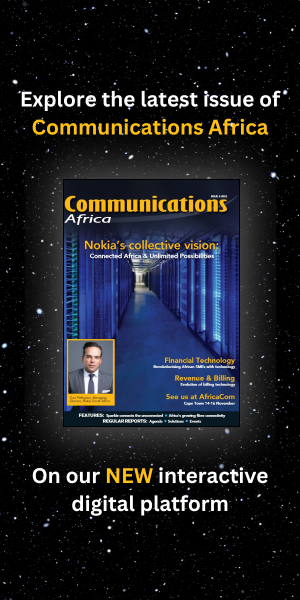Stefano Resi, head of Data Centre sales for Middle East and Africa at Nokia, sharing insights into South Africa’s leadership role in Africa’s evolving data centre ecosystem, its unique advantages, current challenges and the road ahead for digital infrastructure across the continent
South Africa has long been a digital powerhouse on the continent, but as infrastructure demand accelerates, its role is expanding in new and significant ways.
With more than 30 million sq km, 54 countries and over 1.5 billion people, Africa represents a complex digital ecosystem—not a singular market. It is home to rising data centre activity in Nigeria, Kenya, Djibouti, Morocco and Egypt, but South Africa continues to stand apart.
According to Stefano Resi, “South Africa stands out because it is the only country connecting the two oceans and it serves as the gateway to the entire sub-Saharan region.”
But it is not just about geography. “Location alone does not define leadership,” Resi explained. “What sets the country apart is its mature legal framework, education system, and accessible business environment. These factors all contribute to an ecosystem primed for digital innovation.”
South Africa’s position as a key landing point for major undersea cables such as 2Africa and Equiano enhances its connectivity, while cities like Johannesburg and Cape Town are becoming magnets for hyperscale and colocation developments.
“These factors combine to make South Africa a fertile environment for large-scale data centre investment,” added Resi. “Already, Johannesburg and Cape Town are hosting an expanding constellation of high-capacity facilities.”
Data centre design has also evolved. While earlier models focused on simple storage and compute, modern facilities are driven by hyperscalers like AWS, Google Cloud and Microsoft Azure. Traffic now flows heavily within the data centre (east-west), requiring intelligent switching, dynamic architecture and automation.
This transformation aligns with the rise of latency-sensitive services such as augmented reality, industrial IoT and autonomous systems—services that demand a new kind of infrastructure.
“South Africa, with its dispersed urban centres and vast geography, is uniquely positioned to build a tiered architecture of core and edge data centres,” Resi explained. “These smaller edge facilities will be critical to delivering low-latency services to end users across the country.”
Yet, power instability remains a persistent challenge. Data centres consume vast amounts of electricity, and South Africa’s energy volatility poses a threat.
“Power is the Achilles heel of the digital (r)evolution in South Africa,” noted Resi. “However, this challenge can become an opportunity by accelerating the adoption of green energy sources. There needs to be a national-level commitment to energy stability if we are to meet future AI-driven demand.”
The industry must also prepare for the impact of AI. Unlike traditional workloads, AI applications require new cooling, hardware and networking standards.
“AI will reshape how we design data centres,” concluded Resi. “Inference and learning workloads place different demands on hardware, cooling, layout and obviously new network design and specifications.”
He believes South Africa will remain a central pillar in Africa’s digital transformation. “In a first phase by providing directly the data centre infrastructure for less digitalized countries, however in a second phase, when these countries will be accelerating their digital path, South Africa will continue to be the Hub and the guiding reference for the continent’s digital Agenda.”
























